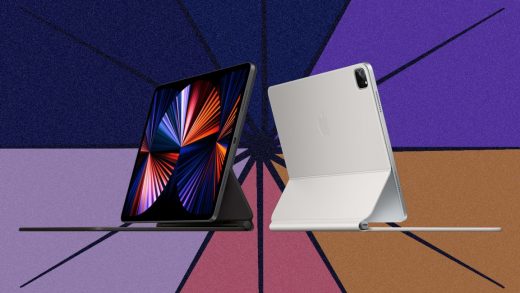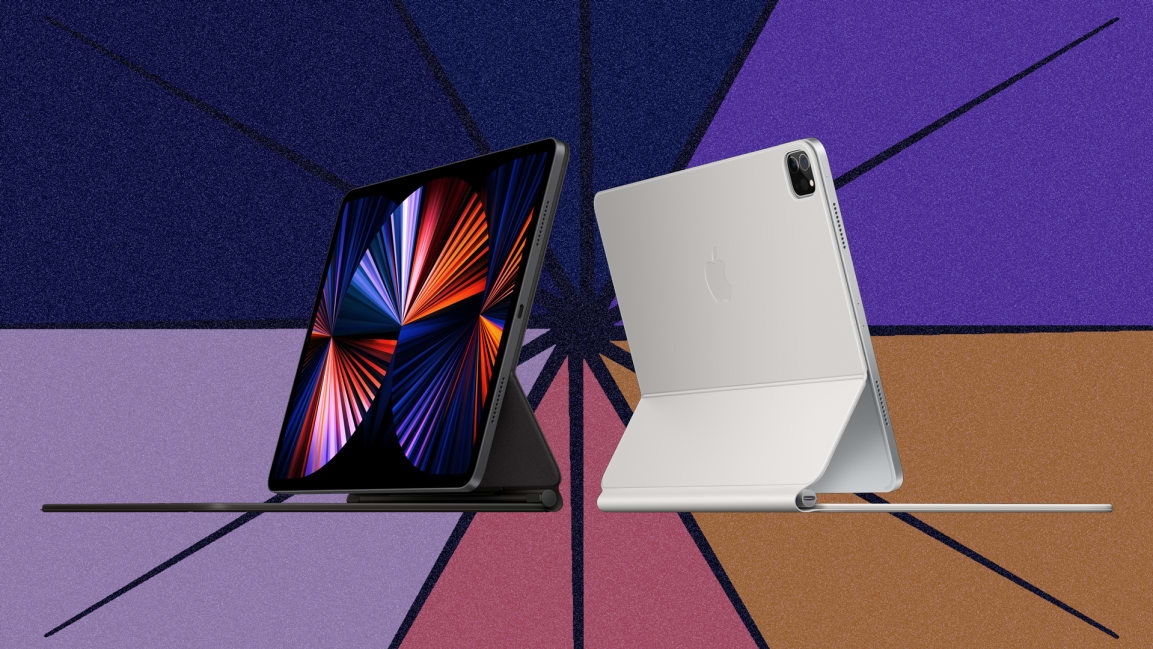New iPad Pro: Amazing hardware in search of equally amazing software
There’s a long-standing urban myth that Apple designs products with planned obsolescence in mind—intentionally engineering them so that you’ll grow dissatisfied over time and want to replace them with something newer and shinier. Don’t you believe it. The company actually has a pretty impressive track record of building products that remain useful for the long haul, even well after they’ve been discontinued and replaced.
One of the best recent examples is the iPad Pro that arrived back in November 2018. Now theoretically two generations out of date, it belies its age by feeling just about as fast, fresh, stylish, and capable as it did on day one. It’s even compatible with Apple’s Magic Keyboard, which shipped 16 months later and took the iPad Pro to new heights as a laptop replacement.
That 2018 iPad Pro was so good, in fact, that it hasn’t cried out for reinvention. Last year’s iPad Pro acknowledged that by focusing on improvements to the rear camera system, including some aimed at making augmented-reality apps work better. For most iPad Pro users, it was the kind of update you could sensibly skip, biding your time to see what came next.
That time has arrived. Apple is about to release another new iPad Pro that, like last year’s model, retains the industrial design and basic feature set of the 2018 version. (It officially arrives in stores on Friday, though it’s already in enough demand that Apple is quoting availability dates for new preorders in late June and July.) I’ve spent more than a week with a prerelease 12.9-inch unit provided by Apple, along with a Magic Keyboard case and Pencil stylus. (The keyboard is the new white version, which looks mighty sharp—and, unlike any previous iPad keyboard, is color-coordinated with the Pencil.)
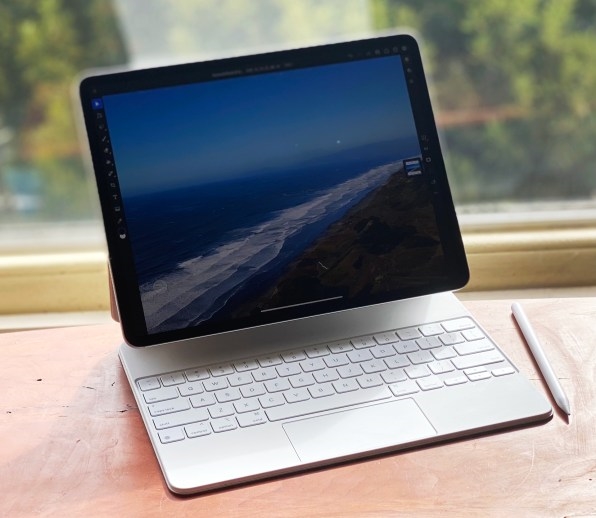
[Photo: Harry McCracken]
In terms of sheer technical excellence, this new iPad Pro is a good-size leap beyond its 2018 and 2020 predecessors. It also meets or beats the current MacBook Pro in most respects that matter. It sports the same fast M1 processor as the 13-inch MacBook Pro and can be tricked out with 2 TB of storage and 16 GB of RAM, just like the MacBook Pro. The 12.9-inch version’s new Liquid Retina XDR display—the first on any Apple product based on mini-LED technology—exceeds the MacBook Pro’s image quality.
That’s not even counting the iPad features you can’t get on any Mac, such as Face ID, Pencil support, a touchscreen with ProMotion, and built-in cellular connectivity. (The last of which is now 5G—for many of us, still not that scintillating but a necessary bit of future-proofing.)
This tablet takes the “Pro” in its name seriously. And in explaining who it’s for, Apple has brought up some highly professional users, such as filmmakers, augmented-reality developers, and product designers. The sort of people, in other words, who are eager to get all the computing muscle they can, and are willing to pay for it.
Of course, such users don’t just need cutting-edge hardware. In the end, it’s about the operating system that runs on that hardware, and the apps on top of that. At the moment, the iPad Pro has sprinted so far ahead of its software that it raises new questions about the platform rather than answering all the ones we already have.
It’s great to buy a device you can grow into, as people who purchased the 2018 iPad Pro discovered. The new iPad Pro is such a device. But it’s also a reminder that the whole idea of the iPad Pro has a fair amount of growing up yet to do.
The screen of the future
If the new iPad Pro has a signature feature, it’s the new display. As with every other iPad display, it’s based on LCD technology. But while the previous iPad Pro screen was illuminated by 72 LEDs, the new one increases that by almost 14,000%. Behind the screen, there are 10,000 tiny LEDs arranged in 2,500 zones, giving Apple the ability to boost or dim the brightness with pinpoint precision. That allows for blacker blacks and more accurate reproduction of a broader range of colors.
Rumor has it that Apple would like to spread mini-LED technology across its line—from iPhones to MacBooks to product categories it hasn’t even entered yet. For now, it’s available only in the 12.9-inch iPad Pro, whose $1,099 starting price is $100 more than the previous model. Manufacturing mini-LED screens in volume remains a challenge, reportedly leading to a backlog of orders for the 12.9-inch version and presumably helping to explain why the new 11-inch iPad Pro sticks with the previous-generation display.
This isn’t an advance on the level of the iPad’s jump to retina resolution back in 2012, which instantly made every previous iPad display look archaic. (Apple’s site continues to brag that the 11-inch iPad Pro’s non-mini-LED screen is “gorgeous” and “incredibly advanced,” which remains true.) With many iPad tasks—certainly those not involving photographic imagery—I didn’t notice a difference in image quality worth caring about.
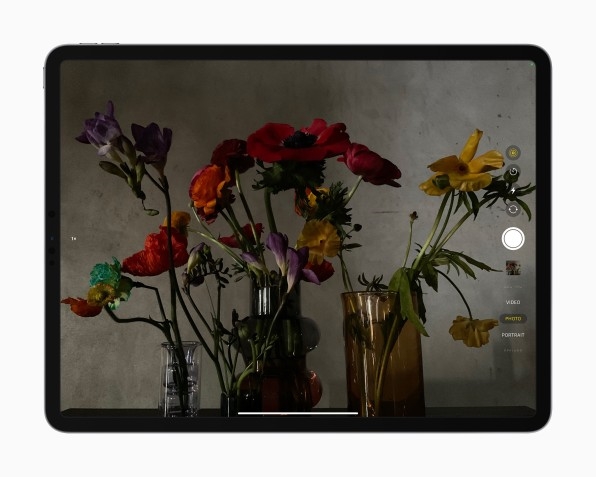
But for full-screen HDR (high-dynamic range) photos and videos—from ones shot with an iPhone to Hollywood movies—the mini-LED illumination’s impact can be striking. With the new display’s ability to hit 1600 nits of peak brightness, video with flashes of sunlight that would make you squint in real life has a similar effect on screen. Blacks get really black. And colors often feel like they have dimensionality to them: In an iPhone portrait, my wife’s burgundy eyeglasses looked more authentically plasticky than on other displays.
Using the Liquid Retina XDR screen left me wanting to create more HDR content. It’s also a better HDR experience than my (admittedly budget-priced) 50-inch HDR TV.
Apple has been comparing the new screen to its $4,999 Pro Display XDR and touting its virtues for creative professionals who need the best image quality possible. For most of the rest of us, Liquid Retina XDR is not an overwhelming incentive to upgrade, but it’s still a nice advance. If this technology indeed becomes standard equipment on future Apple devices, it will be good news.
Then there’s performance. Apple says that the M1 chip in the new iPad Pro delivers up to 50% faster CPU performance and up to 40% faster graphics than last year’s iPad Pro. I didn’t get hung up verifying such claims using a benchmarking tool such as Geekbench: The 2018 iPad Pro I use daily still feels so snappy that I didn’t crave more speed.
I did, however, notice an improvement in a few instances. For example, the LumaFusion video editor—one of the few iPad apps that doesn’t feel like it springs to life almost instantly—takes around five seconds to open on my 2018 iPad Pro and two seconds on the new model. (Along with the M1 chip’s speed boost, Apple says that the new iPad Pro can access storage twice as fast as before.)
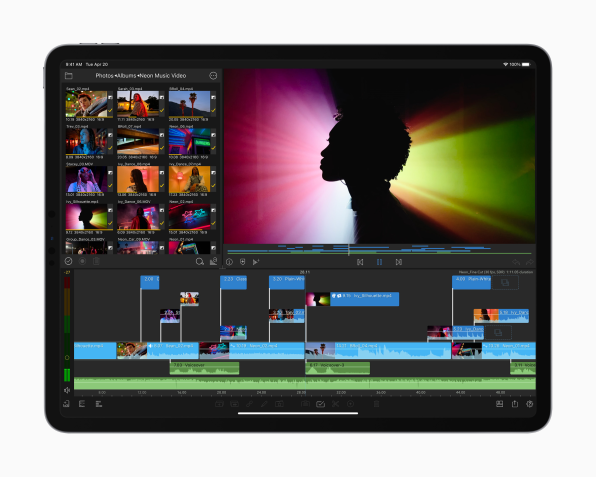
There’s a limit to the impact that any one generation of computer can have on the software it runs. After all, developers aren’t about to release apps that run great on the new iPad Pro but are intolerably slow on its newish predecessors. Still, software that pushes the envelope of what an iPad can do should benefit from the M1. (I’m excited about the 3D painting features that Procreate is teasing for its next version.) And over time, Apple’s commitment to building faster and faster iPads that are better and better at tasks such as machine learning drives the platform forward.
For some of us, the new iPad Pro’s generous increase in RAM might make for a more noticeable upgrade than the M1 chip, since it allows for vigorous multitasking between memory-hungry apps. When purchased with 1 TB or 2 TB of storage, both the 12.9-inch and 11-inch iPad Pros now pack 16 GB of RAM—by far the most ever for an iOS device. (Models with less storage still offer an impressive 8 GB of RAM.) On earlier iPad Pros, Scrivener—one of my most-used apps—has a nasty tendency to require frequent reloading, which exits it out of the document I’m working on and irritates me every time. With the 1 TB/16 GB iPad Pro I tried, Scrivener went for days without running out of memory. Bliss.
Another upgrade—the addition of Thunderbolt 3 compatibility to the iPad Pro’s sole port—may pay eventual dividends, even though most of us don’t have the pricey displays (such as Apple’s own Pro Display XDR) and hard drives that presently use Thunderbolt. The new port is also compatible with USB4, the still-emerging USB-C successor that’s a near relative of Thunderbolt and—like Thunderbolt 3–offers four times the speed of the old iPad Pro USB 3.1 connector. Once USB4 add-ons arrive in force, owners of the new iPad Pro should be ready to take full advantage of them.
The camera stays put
Before the announcement of this new iPad Pro, if you’d asked me for the one new feature I most coveted, I would have unhesitatingly told you that I hoped Apple would move the front-facing camera from the tablet’s narrower edge to its wider one. As positioned, it’s centered atop the display when you use the iPad Pro in portrait mode. But if you’re working in landscape orientation—say, because the tablet is ensconced in a Magic Keyboard case—the camera is on the side and halfway down. As a result, I’ve spent my pandemic doing hundreds of Zoom calls in which I’m off-center and shifty-eyed, while my coworkers, most all of whom use Macs, look far more presentable.
Why Apple has chosen to ignore the groundswell of support for a landscape-optimized camera I’m not sure.
On the 2021 iPad Pro, the front-facing camera remains where it’s always been. It’s not that Apple expects most people to use the iPad Pro in portrait mode most of the time: Almost all of the imagery of iPad Pros during the company’s “Spring Loaded” event depicted them in landscape orientation. Why it’s chosen to ignore the groundswell of support for a landscape-optimized camera I’m not sure.
Apple did, however, introduce a new software technology that’s all about the front-facing camera and your positional relationship with it. It’s called Center Stage, and it uses AI to intelligently crop the video from the new, wider-angle camera. If you move around in the camera’s view, Center Stage pans to recenter you with balletic grace; if someone else joins the scene, it recomposes the shot to accommodate the new arrival. This feature works in Apple’s FaceTime and Clips, and third-party apps that use the front-facing camera get it for free. (The switches to turn Center Stage on and off in specific apps are buried in the iPadOS settings app, but Apple says that a new API will let developers implement on/off switches within their own apps.)

Apple’s example use cases for Center Stage involve scenarios such as families cooking in the kitchen while FaceTiming and worker bees collaborating on real-world whiteboards during video calls. It should suit such purposes well. And when I used it to Zoom at home, it did more or less center me in the frame in a tight close-up. But since the camera remained off on the left, I still didn’t look like I was making eye contact.
Needed: Pro software
Suboptimal front-facing camera placement aside, it’s tough to quibble with anything about this tablet as a piece of raw computing hardware. But as Steve Jobs was fond of pointing out, Apple doesn’t sell raw computing hardware—it makes the whole widget. With the new iPad Pro, the existing disparity between iPad hardware and software’s suitability for advanced users has opened up into a yawning chasm.
In 2019, Apple rebranded the iPad’s version of iOS as iPadOS—an acknowledgement that it’s tough for one operating system to serve the needs of both a phone and a tablet. Yet even within iPadland there are multiple constituencies. They include everyone from folks who bought a $329 entry-level iPad on impulse to those who have invested $2,399 on a fully loaded iPad Pro in the expectation of using it as a primary computing device.
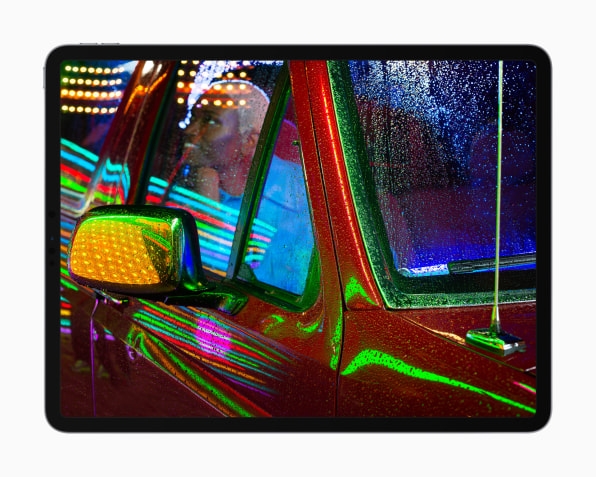
There’s not a lot in the current version of iPadOS that seems aimed at that latter group. For instance, creative pros tend to like to customize their workspaces, a design priority that iOS and iPadOS have never emphasized. (Apple only recently added the ability to set the default browser, for Pete’s sake.) You can almost hear the new iPad Pro begging for a more tweakable software environment aimed at its most demanding buyers.
And maybe it will get one. In the past, there have been multiple examples of iPad hardware advances running ahead of software ones or vice versa, then regaining equilibrium. In 2019, for instance, iPadOS introduced support for pointing devices—a necessary step for the following year’s trackpad-equipped Magic Keyboard to work. Similarly, the 2018 iPad Pro got a USB-C connector, but we had to wait nearly a year before iPadOS 13 let us use that connector for its most obvious purpose: plugging in thumb drives and hard disks.
It’s not easy to chart the future of an ambitious computing platform—particularly for Apple.
Bottom line: You don’t have to be a hopeless Pollyanna to conclude that Apple may have built such a capable iPad Pro because it plans to amp up iPadOS’s power-user features. With the Worldwide Developers Conference (WWDC) less than three weeks away, at least we won’t have to wait much longer to learn where the iPad’s operating system is going.
Even then, making iPadOS worthy of the iPad Pro isn’t just about adding stuff. Professionals prize computing tools that, in Apple’s own parlance, “just work.” But in its current incarnation, iPadOS falls well short of industrial-strength robustness. Simply doing a better job of ensuring that iPadOS works as advertised would make it a much better foundation for ambitious creativity and productivity.
For me, at least, the text-replacement keyboard shortcut feature often mysteriously stops working—until it mysteriously starts again. Cutting and pasting from the Magic Keyboard randomly fails. The clever ability to turn a Safari screenshot into a full-length PDF chokes on complex web pages. And the integration of Dropbox into Apple’s Files app involves a search field that doesn’t actually do anything. These quirks and others have festered through multiple iPadOS updates on more than one iPad; fixing them would do as much to brighten my workday as any theoretical new feature might.
It’s not easy to chart the future of an ambitious computing platform—particularly for Apple, which bears the entire responsibility itself and seems committed to ensuring that iPads and Macs never start to look like slight variants on the same premise. But even iPad Pro diehards—like me!—who value Apple’s tablet in part because it isn’t a Mac want it to evolve in a brisker, more consistent fashion. The new model could be a magnificent canvas for such evolution. Next stop, WWDC.
(23)

